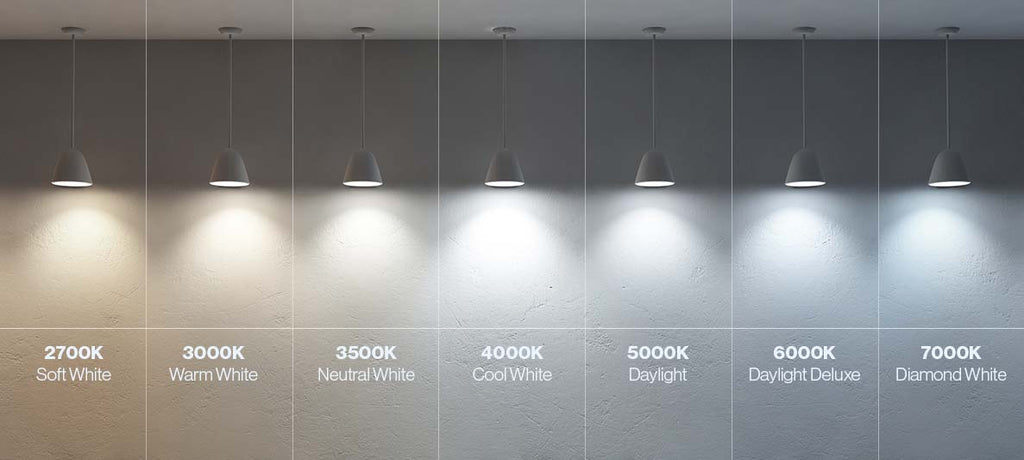Lighting Advancements in Professional Sports
When we think of sports, lighting is probably not the first thing that comes to mind. But believe it or not, the quality of lighting can make a huge difference in reducing injuries on the field or on the court. Lighting advancements have played a crucial role in improving both the athletic experience and fan engagement.
As we approach the big game between the Kansas City Chiefs and the Philadelphia Eagles, we’ll look at how these lighting advancements are shaping the sport we’re all about to tune in for.
 LEDs in Stadiums and Arenas
LEDs in Stadiums and Arenas
I know that we say this all the time but that doesn’t make it less true—LEDs have come a long way in just a few short years. Modern LED technology is now the go-to choice for sports stadiums and arenas worldwide, because LEDs offer superior energy efficiency, brighter and more consistent lighting, and better control over the overall environment.
One of the standout benefits of LEDs is their ability to be fine-tuned for different needs. Stadiums equipped with LED systems can adjust lighting to create the perfect environment for any event. But it’s not just about ambiance when it comes to lighting in pro sports. There are a bunch of other cool ways that LEDs have been implemented in this industry.

Injury Prevention
Most of the popular spectator sports in America are played at high speeds, making the risk of injury significant. As we prepare for this Sunday’s Super Bowl, keep in mind that football has one of the highest injury rates among major sports. That said, the light coverage on the field is extremely important.
And, duh, of course lighting helps the players see the ball and whatnot, but it goes deeper than that. Advanced LEDs not only provide brighter, more uniform light but they also help reduce glare—something that can be a huge issue in many arenas. When glare is minimized, players can focus better on the game and avoid collisions with teammates and opponents.
Good lighting doesn’t always mean the biggest and brightest on the market. It refers to the quality of the light as well as the beam angle. If the lights on the field are blinding or have a ton of glare, it can ruin the players’ focus. With newer lighting technologies, stadiums are now using LEDs to create more consistent lighting across the field. Unlike older lights, which could produce shadows and dark spots, LED lights provide a more even distribution of light.

VR Training and Lighting’s Role in Athlete Performance
The concept of virtual reality training feels like something out of a sci-fi movie, but apparently, it’s becoming a pretty big deal in the world of professional sports. VR training uses immersive environments that help athletes practice in controlled settings, replicating real game situations without needing to physically be on the field.
Football players can set their systems up to mimic the conditions in away-game stadiums, to provide a level of comfort and familiarity that can translate over from training to game day.
In VR training, players can adjust settings to help create the most realistic and immersive experience possible. VR simulations rely heavily on LED lighting cues to guide athletes through their simulation. For example, in football or soccer, lighting can be used to highlight key targets or markers on the virtual field, directing the athlete’s attention and helping them react more quickly in a gamified setting. The lighting’s color, intensity, and movement can simulate the time of day, weather conditions, and different game scenarios, allowing athletes to experience a variety of environments without leaving the training facility.

Better Televised Sports
Growing up as an avid watcher of televised sports, I have been watching displays and broadcast tools evolve over the years. As a kid, I always thought that football was boring because I couldn’t follow the plays or even the ball. A more modern approach to televised football games now includes play by play breakdowns with advanced LED screen displays, making it easier to keep up.
On top of that major improvement, broadcasts aren’t just about the action on the field anymore—it’s about how the game looks. Television broadcasts have been revolutionized by advanced lighting systems, which are designed to enhance the camera’s ability to capture every moment with precision, even at night or in poor weather conditions. Plus, LEDs can also help with visual storytelling. During key moments—like a game-winning shot or a dramatic touchdown—the lighting can change to highlight the action, emphasizing the importance of the moment.

Jumbo Tron Updates
Everyone knows that the best part of attending a live sporting event is the chance to clown your way onto the jumbo tron for 5 seconds of fame. Sometimes, the jumbo tron is even more exciting than the game itself! Yes, I paid hundreds of dollars to watch two hockey players punch each other in real time, but I get the added bonus of seeing a cool light display while they fight.
Light shows and projections have become a staple of the pre-game and halftime entertainment, especially when it comes to the Super Bowl. The halftime show is often more anticipated than the game itself.

The Future of Lighting in Sports
As technology continues to advance, it’s exciting to think about the future of lighting in sports. From smarter, more energy-efficient LED systems to the integration of VR, the possibilities are endless. Athletes will benefit from even more personalized training experiences, while fans will continue to enjoy richer, more immersive environments both in-stadium and at home.
Ultimately, lighting is no longer just a practical necessity; it’s a game-changer for how we experience sports, making them more exciting, immersive, and engaging than ever before. Whether you're an athlete or a fan, it’s clear that lighting is taking sports to new heights, illuminating the future in ways we never imagined possible.


